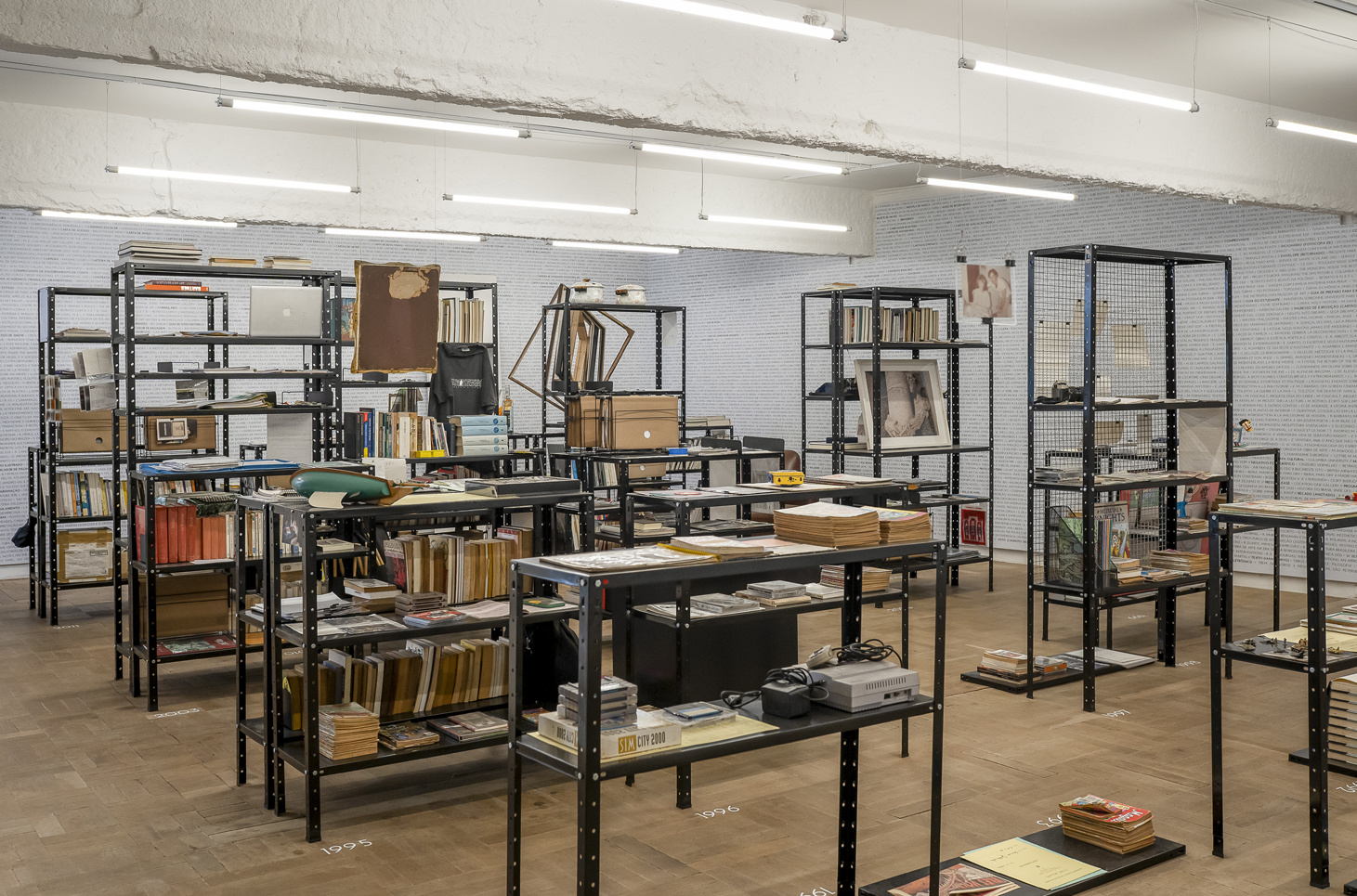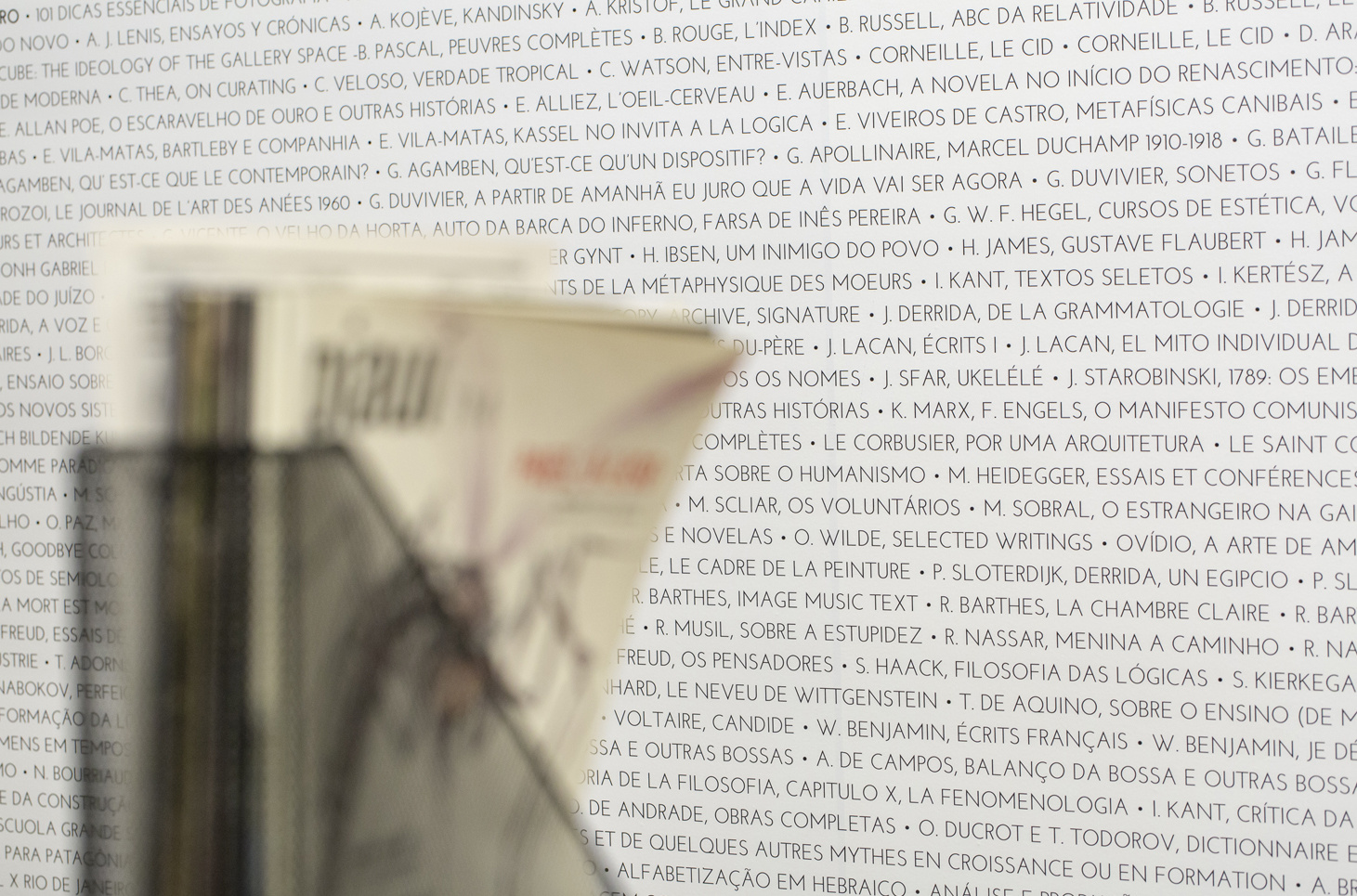


São Paulo Brasil
To tell the story of a lifetime from the objects accumulated over the years is the idea behind Daniel Jablonski’s The Things. As Jablonski exhaustively catalogs all of his disused belongings, arbitrarily accumulated over the years, he logs and makes public almost all of his personal objects, transforming them into powerful narrative supports and forcing memory in radically unforeseen directions.
OUT 17 – DEC 15 2018
The more than 3,000 items, displayed unabridged by Jablonski, range from old clothes to photocopies of college texts, through kitchen objects, books, catalogs, to family photographs, receipts and bills.
Beyond the sphere of consumption, these objects also serve as powerful narrative supports. Musical preferences are recorded on cassette tapes and favorite movies on VHS.
Ideas are recorded on napkins, eating habits on shopping lists and loves on postcards. Some objects, on the other hand, evoke the memory of the giver, such as toys, clothes, watches, and even furniture. Others still have people’s names printed on them and attest something about them, such as letters, e-mails, school reports, electricity bills, medical reports, and passports.
As the artist inventories and makes public almost all of his personal objects, he points to other narrative possibilities in the realm of personal expression.
Unlike what happens in most autobiographies, which start from their authors’ memories (and forgettings), in The Things the artist uses the objects to drive his memory in radically unforeseen directions.
 As Coisas: aproximadamente 3.200 itens pessoais do artista, 32 estantes metálicas, 2 gaveteiros metálicos, 15 tubos de luz, itens de papelaria em quantidades variadas, 2 media players, 1 mural de 10 metros em vinil adesivo e 34 marcações em vinil adesivo (dimensões totais variáveis).
As Coisas: aproximadamente 3.200 itens pessoais do artista, 32 estantes metálicas, 2 gaveteiros metálicos, 15 tubos de luz, itens de papelaria em quantidades variadas, 2 media players, 1 mural de 10 metros em vinil adesivo e 34 marcações em vinil adesivo (dimensões totais variáveis).
The very idea of making a complete listing of an individual’s personal items was taken from an (unrealized) project by French writer Georges Perec; by attempting to realize someone else’s project, The Things signals that anyone could undertake the same memory work.
 Assumindo a forma expositiva de uma grande instalação imersiva, propondo vários tipos de classificação simultâneos, As coisas remete ainda à forma e à função simbólica de um labirinto, que funcionam como poderosas metáforas do sujeito: perder-se e encontrar-se ali é perder e encontrar a si mesmo.
Assumindo a forma expositiva de uma grande instalação imersiva, propondo vários tipos de classificação simultâneos, As coisas remete ainda à forma e à função simbólica de um labirinto, que funcionam como poderosas metáforas do sujeito: perder-se e encontrar-se ali é perder e encontrar a si mesmo.
 Os mais de 3 mil itens presentes no local, dispostos em prateleiras, gabinetes e arquivos industriais de metal, se repetem em uma lista descritiva em duas paredes, ocupando quase todo seu espaço, sem margem gráfica.
Os mais de 3 mil itens presentes no local, dispostos em prateleiras, gabinetes e arquivos industriais de metal, se repetem em uma lista descritiva em duas paredes, ocupando quase todo seu espaço, sem margem gráfica.
“This panic of losing my tracks followed from a fury to conserve and classify. I kept everything: the letters within their envelopes, movie tickets, airline tickets, invoices, checkbooks, prospectuses, receipts, catalogs, summonses, daily newspapers, dry markers, empty lighters and even gas and electricity bills from an apartment I hadn’t lived in for more than six years, and sometimes I would spend a whole day sorting and sorting, imagining a classification that would fill every year, every month, every day of my life.”
 Formulário do IBGE: 11 folhas A4 coloridas preenchidas à mão por Leonardo Araujo Beserra.
Formulário do IBGE: 11 folhas A4 coloridas preenchidas à mão por Leonardo Araujo Beserra.
IBGE (Census Authority) form: 11 A4 colored sheets filled out by hand by Leonardo Araujo Beserra.
To the IBGE analyst: transcript of the partial report of October 17, 2018:
Since the beginning of this year, the interviewee, Daniel Chueke Jablonski, has been organizing, categorizing, and cataloging the multiple material residues arbitrarily accumulated in the course of his life. In the place visited, Janaina Torres Gallery, this interviewer, Leonardo Araujo Beserra, found them arranged in three different ways. First, in chronological order, year by year. Second, by categories in alphabetical order, letter by letter. And, finally, by means of recorded audio narratives, made from some objects from each year (these, apparently, still in process).
The interviewee did not answer any of the questions on the questionnaire. Instead, he suggested that the interviewer filled it out by himself, extracting all the necessary information from the analysis and investigation of the more than 3,000 items present in the place. These were arranged in shelves, cabinets and industrial metal files, painted black. And they are repeated in a descriptive list on two walls, occupying almost all of its space, with no graphic margin. There are also two MP3 players with headphones on which one can listen, on each track of the album, to the aforementioned narratives.
– Critical collaboration by Leonardo Araujo Beserra at the exhibition The Things, at Janaina Torres Gallery, São Paulo, on 17.10.18